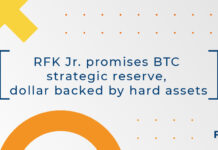One of the biggest expectations for Cardano (ADA) investors is the arrival of stablecoins on the altcoin network. Although it already has synthetic stablecoin iUSD, great expectations surround Djed, an algorithmic stablecoin that may mark the history of the competitor of Ethereum (ETH) in its development of smart contracts.
Djed will keep its value as close to $1 as possible by leveraging the smart contract design on the Cardano blockchain. The stablecoin will hold a reserve of base currencies while mining and burning other stable assets and reserve currencies to contain fluctuations.
Smart contract programming will be used to ensure that the stablecoin works effectively for transactions in the world of decentralized finance (DeFi).
In addition, it will have two versions. The first one will be designed only to serve as a medium of exchange. The second one is a smart contract that uses a continuous pricing model and dynamic rates to react more quickly to external events.
According to the COTI blog, Djed is aiming to be the main currency used to pay all transaction fees on the Cardano network, which will bring more usability to the stablecoin ecosystem and make transaction costs more predictable.
Could Djed collapse like Terra’s stablecoin?
A collapse may be a major crypto investor’s fear as the algorithmic stablecoin model presented by Terraform Labs experienced one of the biggest collapses in the cryptocurrency market in 2022.
Just as USTC was backed by Terra Classic (LUNC), Djed will be backed by Cardano. In this sense, by sending ADA to a smart contract, the investor would receive the same amount in the stablecoin, and if the user sends Djed to the smart contract, he/she would receive the equivalent in ADA.
But what if the price of Cardano undergoes a sharp market correction? Surely that would cause the ecosystem to collapse, as the Djed in circulation would no longer be backed up.
To solve this problem, the smart contract will have a reserve currency, SHEN. It will be used to cover price fluctuations on Cardano. The warranty rate will be 400-800%.
The value of SHEN, on the other hand, will be volatile and will offer incentives every time an investor swaps DJED or SHEN for ADA. This may help maintain the stability of the stablecoin.
Another point is the simplicity of the contract (four trades) and some trade locks. At least three locks should protect the DJED contract from insolvency at its minimum implementation.
Lock 1: The purchase of stablecoins (DJED) should only be allowed if the reserve ratio is higher than a certain fraction (r > r min).
Lock 2: The purchase of reserve currencies (SHEN) should only be allowed if the reserve ratio is less than a certain fraction (r < r max). This is because SHEN holders will be rewarded by contract rates. Too large a reserve could dilute them.
Lock 3: The sale of reserve coins should only be allowed if the reserve ratio is greater than a given fraction (r> r min).
How may Djed impact Cardano’s price?
The arrival of stablecoins on the Cardano network could help the cryptocurrency continue to advance as an “Ethereum killer”; after all, stable assets are the ones that have had one of the best performances in recent years.
Analyzing the main altcoin on the market, for example, it is possible to see that a good portion of the transactions that occur on the ETH network are stablecoins. Furthermore, in the top 10, three of the cryptos with the highest market capitalization are stable assets.
With Vasil’s arrival, Cardano is ready to enter this area and leverage the use of its blockchain, something that could be positive for ADA pricing.
Source: U.Today




